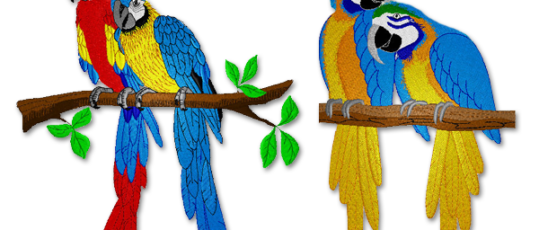Custom Digitizing for Embroidery: Tailored to Your Needs
Wiki Article
Grasping the Needlework Digitizing Process: Your Ultimate Guide
Embroidery digitizing is a thorough craft that requires accuracy and know-how to translate complex layouts into digital layouts for machine embroidery. As craftsmens start this journey to grasp the needlework digitizing process, a thorough understanding of the basics establishes the structure for excellence. Nevertheless, past the basic expertise exists a realm of innovative software application, specialized tools, and nuanced methods waiting to be discovered. By delving right into the subtleties of digitizing, one can unlock a world of innovative possibilities and raise their embroidery projects to new heights.
Understanding Embroidery Digitizing Basics
Embroidery digitizing fundamentals develop the foundation upon which elaborate styles are equated right into machine-readable layouts for exact sewing. This first action in the embroidery digitizing process is vital for making certain that the last stitched product is a faithful representation of the original layout. Recognizing needlework digitizing essentials involves grasping key concepts such as stitch types, sew instructions, thickness, padding, and draw compensation.Stitch types play a crucial duty in establishing the aesthetic and textural outcome of the embroidered style. By choosing the proper stitch kind, whether it be satin, fill, or running stitch, digitizers can achieve the wanted effect and boost the total top quality of the needlework. In addition, sew direction influences the circulation and measurement of the layout, while thickness figures out the spacing and protection of the stitches.
Additionally, underlay sewing supplies stability to the design by safeguarding the textile and stopping distortion during the needlework procedure. Pull compensation is one more important factor to consider to combat the all-natural tendency of textile to contract when stitched. Understanding these embroidery digitizing essentials is essential for producing professional-quality stitched items.
Picking the Right Digitizing Software Program
Selecting the appropriate digitizing software is a critical decision that considerably influences the efficiency and top quality of the embroidery digitizing process. Digitizing for Embroidery. When selecting the best digitizing software program, it is vital to think about elements such as the complexity of designs you prepare to create, the user-friendliness of the software application, the level of consumer support provided, and the compatibility with your needlework machineThere are different digitizing software options offered in the market, ranging from basic programs for beginners to innovative software application for expert digitizers. Some preferred selections include Wilcom EmbroideryStudio, Hatch Needlework Software Program, and PulseID. These software use a variety of devices and attributes to help you create elaborate designs effortlessly.
Before deciding, it is advisable to check out the various software program alternatives via free trials or demonstrations to identify which one ideal fits your demands. Additionally, reading evaluations and seeking referrals from seasoned digitizers can supply useful understandings into the toughness and weak points of each have a peek here software plan (Digitizing for Embroidery). By meticulously evaluating your demands and comparing the features of various digitizing software application, you can make an educated selection that improves your embroidery digitizing process
Digitizing Tools and Methods

Optimizing Layout Settings for Embroidery
Mastering the intricacies of layout setups is fundamental in attaining ideal results in the needlework digitizing procedure, structure upon the structure laid by understanding digitizing tools and techniques. When maximizing style setups for needlework, it is vital to consider factors such as stitch type, density, padding, draw compensation, and enrollment. Registration settings align various components of the style properly, preserving total layout stability.
Troubleshooting Common Digitizing Issues
When coming across common digitizing concerns throughout the needlework process, it is vital to recognize the source and carry out efficient options quickly. One typical problem is stitch thickness issues, where stitches might be as well dense, triggering the material to tighten, or as well thin, bring about spaces in the layout. Readjusting the stitch thickness settings in the digitizing software program can help settle this concern.One more constant website here obstacle is string breaks throughout the needlework process. This can occur due to numerous factors such as inaccurate stress setups, dull needles, or making use of low-grade thread. Making certain proper maintenance of the embroidery machine, consisting of routine needle changes and tension modifications, can reduce the occurrence of thread breaks.
In addition, style registration mistakes can cause misaligned components within the needlework style. Inspecting the design positioning in the digitizing software program and making necessary modifications before sewing can assist in avoiding this issue. By addressing these typical digitizing concerns quickly and effectively, you can ensure a smoother embroidery process and top notch completed products.
Conclusion
Finally, understanding the embroidery digitizing procedure needs a strong understanding of the fundamentals, the best choice of software program, and understanding of devices and techniques. Optimizing design settings and repairing usual digitizing concerns are important steps read the article in ensuring high-quality embroidery results. By complying with these actions diligently, one can accomplish precision and efficiency in the digitizing process.Report this wiki page